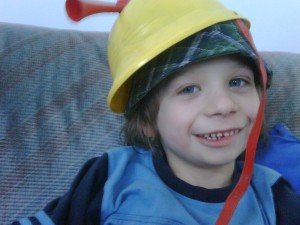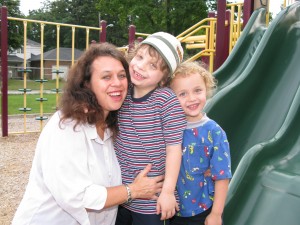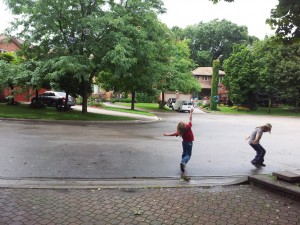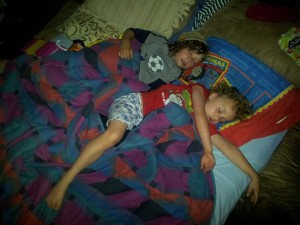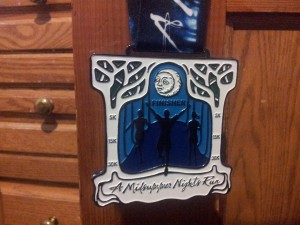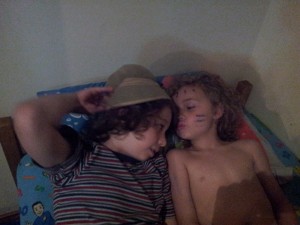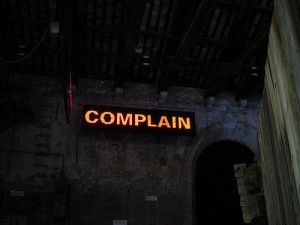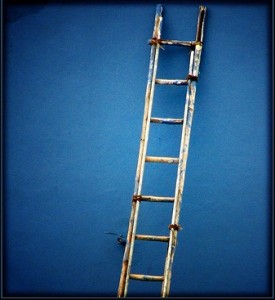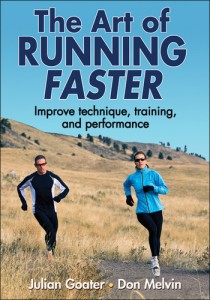This week I am participating in the WEGO Health “Advocating for Another” carnival, in which I answer a series of prompts about what it is like to be the parent of a child with special needs. George is not only my son, he is also James’ brother. This week I have talked a lot about what a great brother James is. Today I want to mention that their relationship is far from one-sided. The boys have a great deal of love for one another, and they are both fantastic brothers to one another.
Today’s prompt: Surprise! Bet you didn’t know… – Today’s post theme is all about the reveal. What’s something people would be surprised to know about your life as a parent and/or about your child/ren. Explore and elaborate upon it in stream-of-consciousness-style.
I will never forget the first time George made a joke. He was about six, and he was going through a stage of gender awareness. He knew that Daddy is a boy, Mommy is a girl, and so on. On this particular occasion, we had been driving all night, returning home from a holiday in New York State, and all four of us had collapsed on my bed in exhaustion. I was just about to doze off when I sensed that someone was watching me. I opened my eyes to see George looking directly at me with a mischievous grin on his face. Then he turned to his dad, and with an air of devilment, he said, “Mommy is a BOY!” and started to giggle uncontrollably.
Although most of us take it for granted, humour is quite a complicated cognitive process. It requires a much higher level of social engagement than one might expect from a child with autism. In order to make a joke, there has to be some form of person-to-person connection and a sense of what the other person will find funny. In other words, the individual has to be capable of a degree of empathy.
But surely kids with autism can’t feel empathy. That, at least, is the perception.
Like most perceptions relating to autism, this one applies more to some people than it does to others. Autism manifests in so many different ways that it is next to impossible to generalize about anything. George was showing basic empathy from a very young age. If James dropped his bottle, George would pick it up and give it to him in the most natural of gestures.
Now that George is almost nine and James is six, I continue to see touching displays of affection between the two boys. Some of my descriptions in other posts could lead one to the impression that the empathy is one-sided, always flowing from James to George. But it goes in the other direction as well. George has a big brotherly kind of concern for James. He will get things that are out of James’ reach, or he will bring a Band-Aid to James before I’m even aware that James has scraped a knee.
George’s sense of humour has also continued to develop, and I have to tell you, the kid is funny. He finds comedic material in the most unexpected places. One day about a year ago, he suddenly announced, “My name is Albert.” This from a kid who hadn’t even said the phrase, “My name is George.” We didn’t know who Albert was or where the name had suddenly popped up from.
The following day, George was with my husband on the couch. My husband said, “Who does Daddy love?” (expecting the answer to be George, of course). George looked at him, and with a twinkle in his eye, he yelled, “Daddy loves ALBERT!” and he ran off in peals of laughter as my husband chased after him.
“I love Albert” is still one of George’s favourite jokes, and it still draws laughter all around.
And if I ever want guaranteed eye contact and a genuine moment of laughter and connection with George, all I have to do is use a bit of humour of my own. I sidle up to him, and whisper in his ear, “George is a girl!”
(Photo credit: Kirsten Doyle)





